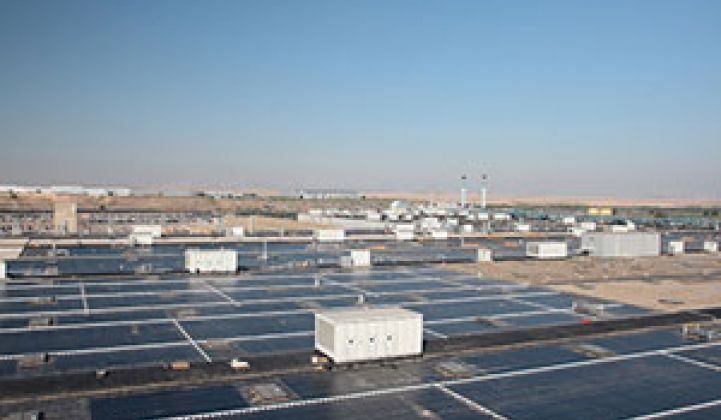New Jersey's largest utility on Tuesday proposed a $773 million project to install solar panels on its own properties, utility poles and public schools.
The Public Service Electric and Gas Co. (PSE&G) said the project would add 120 megawatts of capacity and help it meet a state mandate to generate 22.5 percent of all of its power from renewable sources. The project would meet nearly 7 percent of the statewide goal, the company said.
The utility estimated that the cost of installing the solar energy systems would be $6.44 per watt. While PSE&G said it would put up the money to install those solar panels, it wants to pass on the costs to ratepayers. The company said that would amount to about $0.10 per month for the first year for a residential customer, and increase to $0.35 per month in 2013.
The project will need the approval of the state Board of Public Utilities.
Solar energy has become more attractive to utilities thanks to a vote by Congress last October to allow power companies to take advantage of an investment tax credit. The tax credit allows utilities to offset the cost of developing a solar energy project by as much as 30 percent, a benefit that existed only for independent solar power developers (see Lawmakers Approve Energy Tax Credits, Bailout).
PSE&G's proposal reaffirms some industry observers' belief that utilities will move away from what has been a common approach: utilities would pay third-party developers for solar electricity generated from power plants owned and operated by those outside developers.
Last month, the chief executive of the Pacific Gas and Electric Co., a Northern California utility, said his company would start making equity investments in solar power projects in the next two quarters, a shift from the company's practice of buying solar power from project developers (see Is a PG&E Solar Rooftop Investment on the Horizon?).
In the past, utilities said they didn't want to shoulder the financial burdens and risks of building and operating their own solar power projects, which could costs roughly $7 million per megawatt of installed capacity (using conventional solar panels).
But those risks might not be so bad when a number of independent solar project developers that have deals to deliver power to utilities have been laying off staff and having a difficult time lining up project financing (see OptiSolar Lays Off 300, Half the Staff and Inside Ausra's Big Change).
PSE&G is proposing to break down its $773 million project into four segments: A 40-megawatt ($264 million) project to install solar panels on utility poles and street lights; a 43-megawatt ($273 million) project to install on schools and city/county land; a 35-megawatt ($221 million) project to build a power plant on PSE&G's own property; and a 2-megawatt ($15 million) project to install panels on the roofs of the state affordable housing communities.
PSE&G serves nearly three quarters of the state's population, or 1.7 million gas customers and 2.1 electric customers, the company said on its Website.
Join industry leaders and influencers at Surviving the Shakeout: Greentech Media’s 2009 Solar Industry Summit in Phoenix, Ariz., April 14–15.




